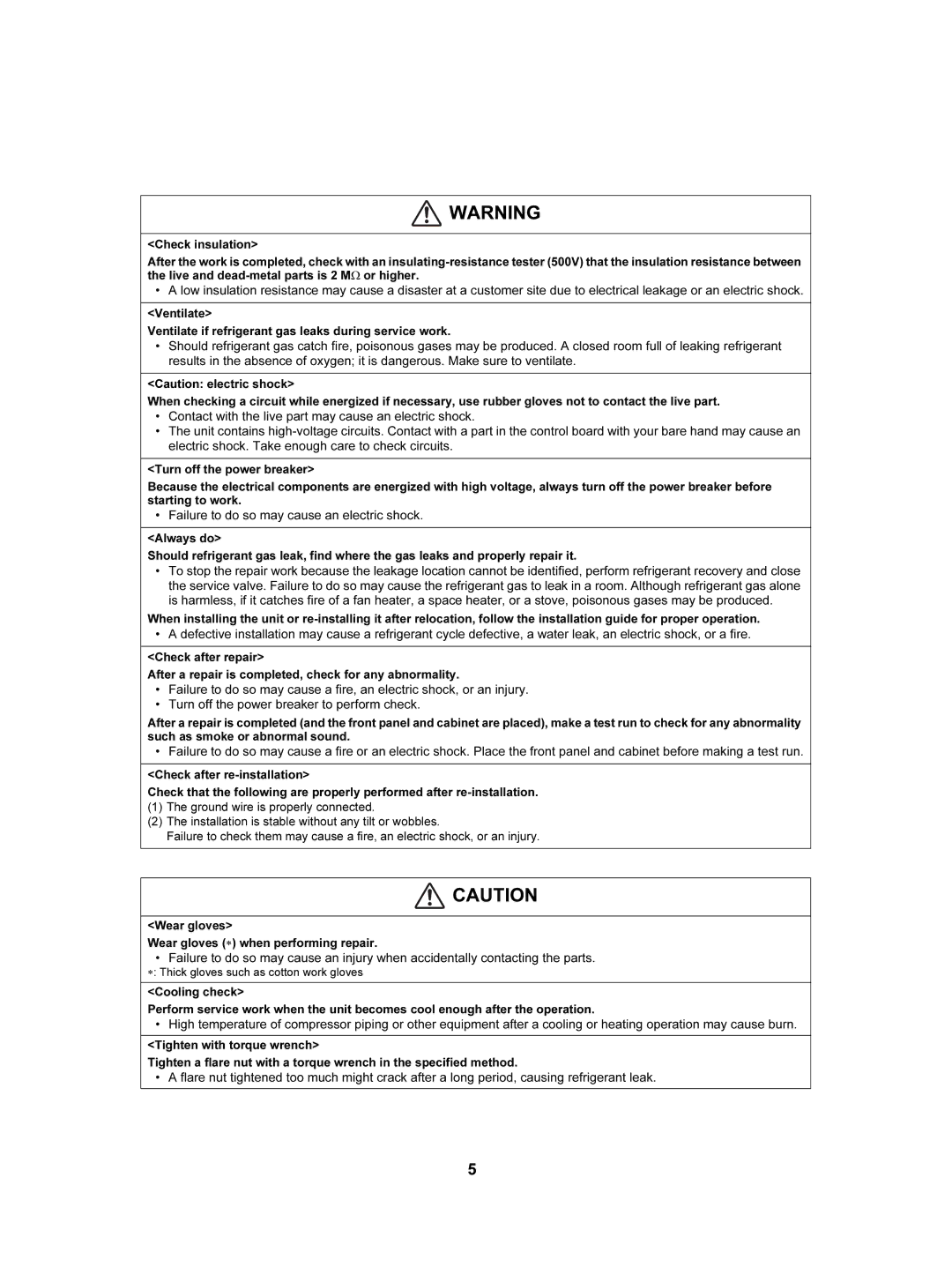
![]() WARNING
WARNING
<Check insulation>
After the work is completed, check with an
• A low insulation resistance may cause a disaster at a customer site due to electrical leakage or an electric shock.
<Ventilate>
Ventilate if refrigerant gas leaks during service work.
•Should refrigerant gas catch fire, poisonous gases may be produced. A closed room full of leaking refrigerant results in the absence of oxygen; it is dangerous. Make sure to ventilate.
<Caution: electric shock>
When checking a circuit while energized if necessary, use rubber gloves not to contact the live part.
•Contact with the live part may cause an electric shock.
•The unit contains
<Turn off the power breaker>
Because the electrical components are energized with high voltage, always turn off the power breaker before starting to work.
• Failure to do so may cause an electric shock.
<Always do>
Should refrigerant gas leak, find where the gas leaks and properly repair it.
•To stop the repair work because the leakage location cannot be identified, perform refrigerant recovery and close the service valve. Failure to do so may cause the refrigerant gas to leak in a room. Although refrigerant gas alone is harmless, if it catches fire of a fan heater, a space heater, or a stove, poisonous gases may be produced.
When installing the unit or
• A defective installation may cause a refrigerant cycle defective, a water leak, an electric shock, or a fire.
<Check after repair>
After a repair is completed, check for any abnormality.
•Failure to do so may cause a fire, an electric shock, or an injury.
•Turn off the power breaker to perform check.
After a repair is completed (and the front panel and cabinet are placed), make a test run to check for any abnormality such as smoke or abnormal sound.
• Failure to do so may cause a fire or an electric shock. Place the front panel and cabinet before making a test run.
<Check after
Check that the following are properly performed after
(1)The ground wire is properly connected.
(2)The installation is stable without any tilt or wobbles.
Failure to check them may cause a fire, an electric shock, or an injury.
![]() CAUTION
CAUTION
<Wear gloves>
Wear gloves (∗) when performing repair.
•Failure to do so may cause an injury when accidentally contacting the parts.
∗: Thick gloves such as cotton work gloves
<Cooling check>
Perform service work when the unit becomes cool enough after the operation.
• High temperature of compressor piping or other equipment after a cooling or heating operation may cause burn.
<Tighten with torque wrench>
Tighten a flare nut with a torque wrench in the specified method.
• A flare nut tightened too much might crack after a long period, causing refrigerant leak.
5
